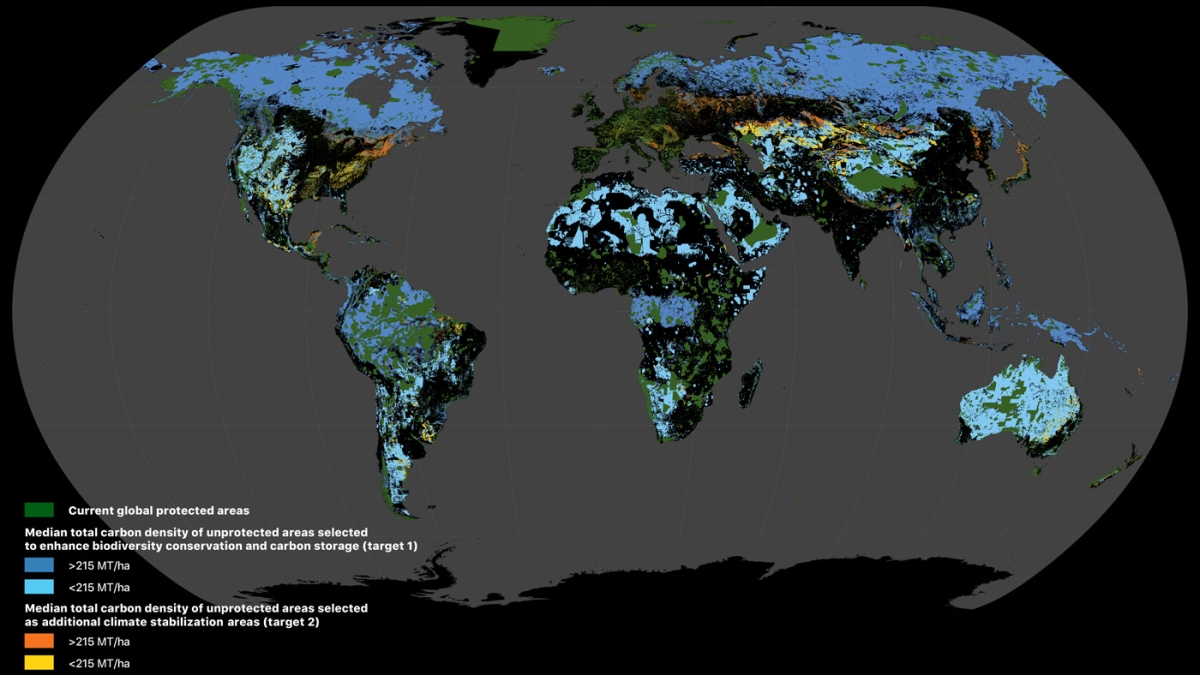ASU researchers contribute to global 'blueprint' to save nature, stabilize Earth’s climate

In 2019, an international team of scientists, Indigenous leaders and conservationists presented the “Global Deal for Nature” (GDN), an ambitious plan calling upon world leaders to formally protect half of Earth’s terrestrial, freshwater and marine realms by 2030. The GDN was the first effort to set timebound, science-based conservation targets for the entire planet.
Greg Asner, director of the Arizona State University Center for Global Discovery and Conservation Science and co-author of the paper noted, “Many distinguished experts have endorsed the idea of setting aside half the surface of the Earth to protect biodiversity. The Global Deal for Nature greatly advances this idea by specifying the amounts, places, and types of protections needed to get this effort moving in the right direction.”
Building upon this previous work, “A 'Global Safety Net' to reverse biodiversity loss and stabilize Earth’s climate" was recently published in Science Advances. The GSN provides the first comprehensive estimate of the total protected land area required to solve the dual crises of biodiversity loss and climate change. The GSN identifies six main “layers” of high ecological priority, such as high biodiversity areas, regions that harbor many rare species and areas that sequester large amounts of carbon.
To these areas, the GSN also incorporates potential wildlife corridors, lands where fragmented ecosystems can be rejoined. Taken together, the layers of the GSN total approximately half of the world’s land, helping to execute the charge “conserve at least half and in the right places,” as recommended by the Convention on Biological Diversity and the United Nations Framework Convention on Climate Change.
Like the GDN, the GSN is science-based and timebound; the authors intend it to be used as a dynamic tool to assess progress toward the comprehensive conservation targets set forth by the GDN.
“This is the first digital map of its kind to create a blueprint for saving life on Earth," said lead author Eric Dinerstein. "It builds upon the current network of protected areas but weaves in currently unprotected parcels that conserve the biological wealth of Earth. By connecting these parcels with wildlife corridors, these vital strands create a true safety net, one that can inoculate us from further biodiversity loss and future pandemics by conserving habitats where zoonotic diseases are likely to cross over to human populations.”
The authors of the GSN highlighted the urgency of this plan in light of the recent ongoing coronavirus pandemic. The policy milestones and targets set forth within the GSN framework would eliminate wildlife markets and the wildlife trade — two known sources of zoonotic spillovers. Preventing further tropical deforestation would lessen human and animal crossover, helping to mitigate human exposure to viral hosts.
The GSN outlines a pathway to achieve its goals using nature-based solutions. Nature-based solutions are low-cost, readily available today and provide benefits to both people and nature. Some of the solutions outlined in the study include identifying biodiverse nonagricultural lands for increased conservation attention, prioritizing ecoregions that optimize carbon storage and drawdown, and aiding species movement and adaptation across ecosystems by creating a comprehensive system of wildlife and climate corridors. The authors estimate that an increase of just 2.3% more land in the right places could save our planet’s most threatened species within five years.
“The Global Safety Net is a powerful global road map to mitigate climate change and avert the collapse of our natural biological infrastructure. The GSN is actionable at all scales, from local to national, but it is imperative that national governments act quickly to develop detailed action plans to achieve these goals,” Asner said.
Thirty-seven percent of the proposed lands for increased conservation protection overlap with Indigenous lands, highlighting the central role Indigenous peoples and their lands play to preserve global biodiversity and major carbon reservoirs. GSN biodiversity objectives could be attained on an estimated one-third of proposed conservation areas through practices such as upholding Indigenous land tenure rights and resourcing programs on Indigenous-managed lands.
The compiled data for the Global Safety Net has been made available through an interactive web application led by One Earth and produced in partnership with Google Earth Engine. Users can click on a country or ecoregion to see how every country and region can contribute in different ways toward this common goal.
More Environment and sustainability

'Earth Day Amplified' promotes power of collective action
Everybody loves the concept of sustainability. They want to do their part, and the chance to say they’ve contributed to the well-…

Rethinking Water West conference explores sustainable solutions
How do you secure a future with clean, affordable water for fast-growing populations in places that are contending with unending…
Meet the young students who designed an ocean-cleaning robot
A classroom in the middle of the Sonoran Desert might be the last place you’d expect to find ocean research — but that’s…

